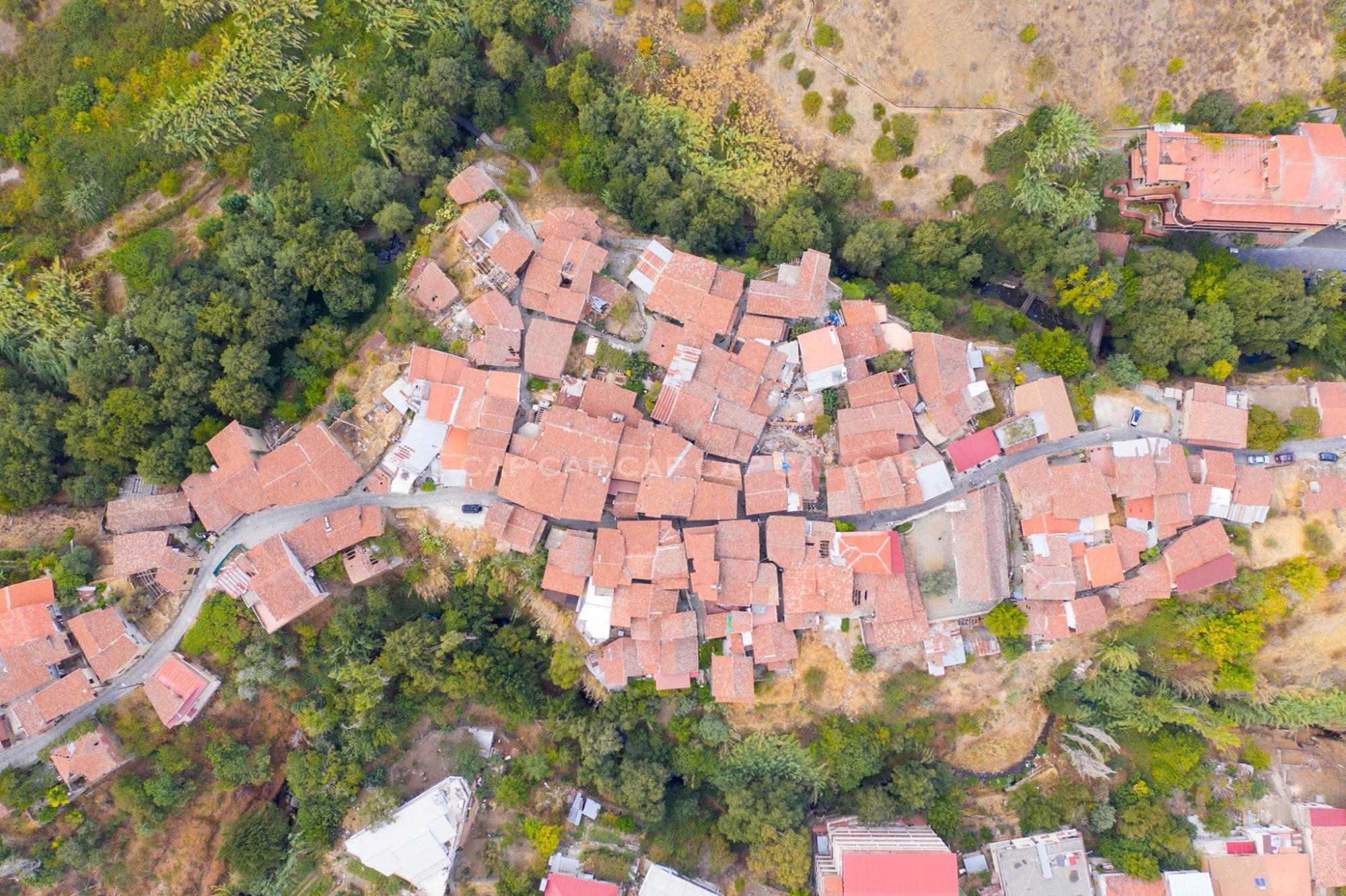Introduction
Kakopetria is a charming mountain village in Cyprus, located in the heart of the Troodos region. Famous for its traditional stone houses, cobbled alleys, and refreshing mountain climate, it attracts visitors all year round. Unlike the coastal resorts such as Limassol or Paphos, Kakopetria offers a completely different atmosphere – calm, authentic, and surrounded by nature.
The village is divided into two parts – the Old Village, with narrow streets and medieval houses, and the New Village, where most of the shops, hotels, and restaurants are located. This unique blend of history and modern comfort makes Kakopetria an ideal destination for travelers who want to experience Cyprus beyond its beaches.
Kakopetria is also a gateway to the Troodos Mountains, making it a popular base for hiking, exploring Byzantine churches, and enjoying local cuisine in traditional taverns. Whether you’re looking for a day trip from Limassol or a weekend escape, this village offers the perfect balance of culture, history, and relaxation.
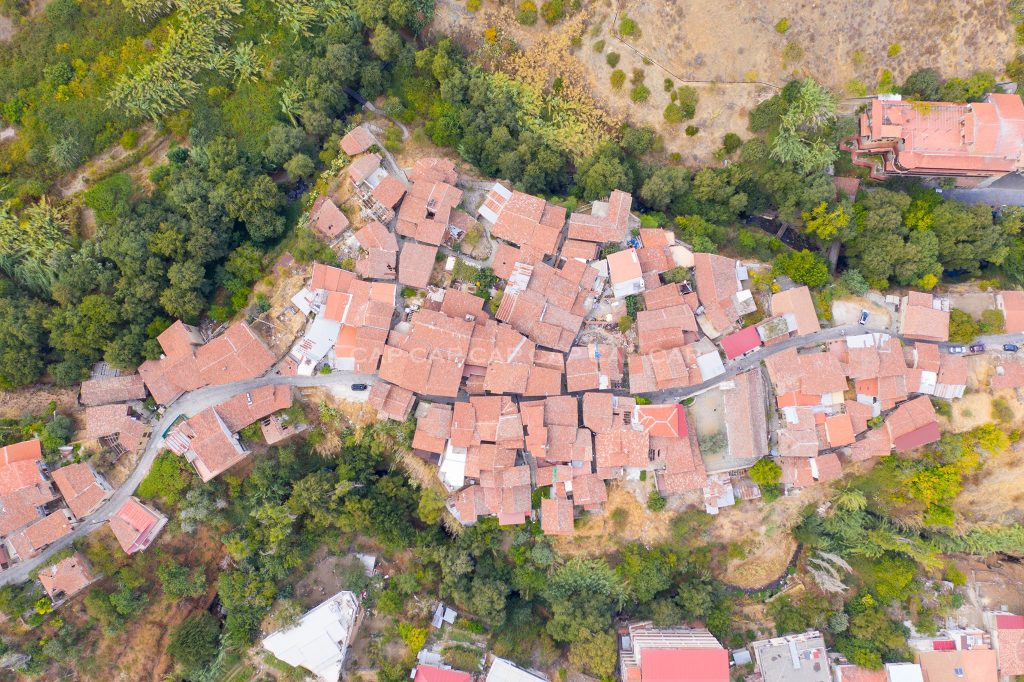
Where is Kakopetria Located?
Kakopetria is situated in the foothills of the Troodos Mountains, at an altitude of about 667 meters above sea level. The village lies at the point where two rivers – Karkotis and Garillis – meet, creating a lush and green environment that is rare for Cyprus.
In terms of distance:
- From Limassol – approximately 65 km (about 1 hour and 15 minutes by car).
- From Nicosia – around 55 km (just over 1 hour by car).
- From Paphos – about 100 km (around 1 hour and 45 minutes by car).
Thanks to its location, Kakopetria is easily accessible from the island’s main cities, making it one of the most visited mountain villages in Cyprus. It is also close to other famous destinations in the Troodos area, such as Platres, Pedoulas, and Troodos Square.
The altitude and geography make Kakopetria cooler than the coast, especially in summer. While Limassol may reach 35°C in July, Kakopetria usually stays around 25–27°C, which is why many Cypriots head to the mountains during the hottest months.
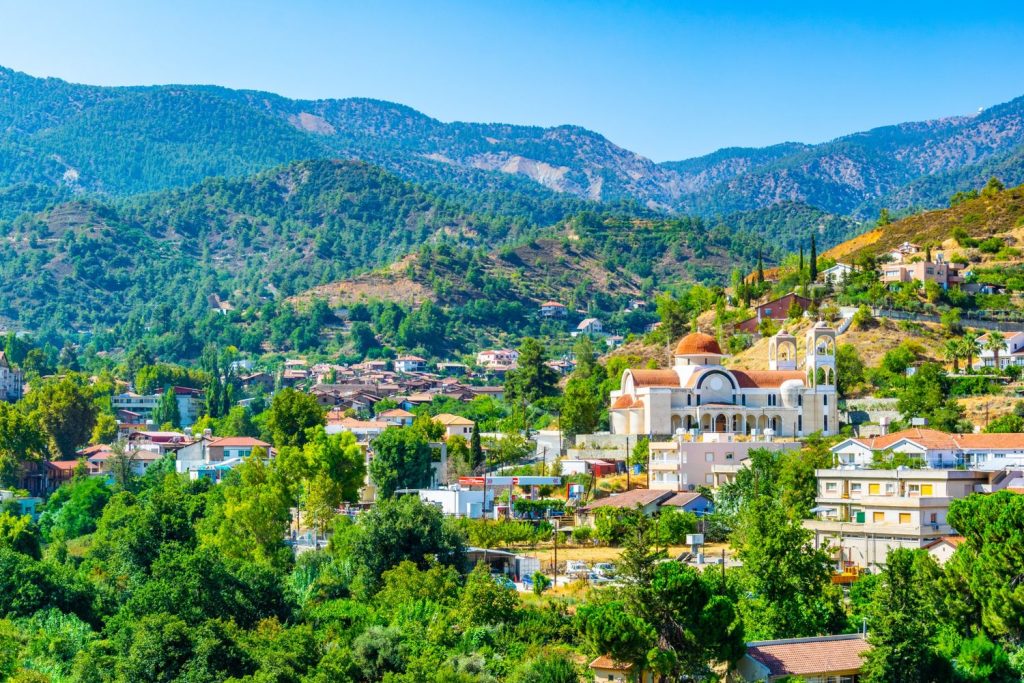
How to Get to Kakopetria from Limassol
Kakopetria is around 65 km north of Limassol, and there are several ways to reach it depending on your budget, comfort, and travel style.
🚗 By Car (Most Convenient Option)
- Route: From Limassol, take the A1 motorway towards Nicosia. Near Klirou village, follow the signs to Kakopetria / Troodos.
- Distance & Time: About 65 km, approximately 1 hour 15 minutes drive.
- Road Conditions: Good quality asphalt roads. Some parts are winding mountain roads, but safe and scenic.
- Advantages:
- Maximum flexibility – stop in villages like Platres, Omodos, Troodos Square along the way.
- Shortest travel time.
- Ideal for combining Kakopetria with other mountain trips.
- Tip: If you rent a car, choose a small or mid-size vehicle, as mountain roads are narrow.
🚗 Rent a Car in Limassol
Enjoy full freedom on your trip to Kakopetria – stop in wineries, villages, and mountain viewpoints on the way.
Find Car Rentals🚌 By Bus (Budget Option, but Slow)
Currently, there is no direct bus from Limassol to Kakopetria. The trip requires a transfer in Nicosia:
- Take an intercity bus from Limassol to Nicosia (approx. 1h 20m).
- From Nicosia’s bus terminal, take the local bus to Kakopetria (around 1h 15m).
- Total Time: 3–4 hours, depending on connections.
- Cost: Around €7–10 one way.
- Advantages: Cheapest way to travel.
- Disadvantages: Long journey with transfers, limited bus frequency (check timetables in advance).
- Tip: Best for solo travelers who don’t mind extra time.
🚖 By Taxi or Private Transfer (Comfort & Speed)
If you don’t want to drive yourself, booking a taxi or private transfer is the easiest way:
- Travel Time: About 1h 15m (same as by car).
- Cost: Approx. €70–100 one way depending on company.
- Advantages:
- Door-to-door service from hotel to Kakopetria.
- Comfortable and stress-free, no need to navigate mountain roads.
- Disadvantages: Expensive compared to car rental.
🚖 Book a Transfer from Limassol
Relax and enjoy the ride – a professional driver will take you directly to Kakopetria from your hotel or the airport.
Book Transfer🚴 By Bike (For Adventure Lovers)
Some cycling enthusiasts ride from Limassol up to Kakopetria through the Troodos mountains.
- Distance: ~65 km uphill.
- Time: 3–4 hours depending on fitness level.
- Tip: Suitable only for trained cyclists. Roads are safe but challenging due to elevation.
History and Heritage of Kakopetria
Kakopetria is one of the oldest continuously inhabited villages in the Troodos region, with roots dating back to Byzantine times. The village has preserved much of its authentic character, making it a living museum of Cypriot mountain life.
The Old Quarter (Palia Kakopetria)
The heart of Kakopetria is its Old Quarter, known as Palia Kakopetria. This part of the village is a maze of narrow cobbled streets, stone-built houses, and wooden balconies decorated with flowers. It perfectly preserves the character of traditional Cypriot mountain architecture.
Strolling through Palia Kakopetria feels like walking into a living postcard. Many of the houses date back to the 18th and 19th centuries and have been lovingly restored. Today, some are private homes, while others have been converted into guesthouses, boutique hotels, and taverns, allowing visitors to experience the authentic charm of the village from the inside.
One of the unique features is how the houses are built very close together, often with overhanging balconies that almost touch each other, creating shady alleys. This design was practical centuries ago and adds a romantic atmosphere today.
As you wander through the Old Quarter, you will also find small chapels, traditional workshops, and local shops selling handmade products like honey, sweets, and wine. It’s a perfect place to buy authentic souvenirs and support local families.
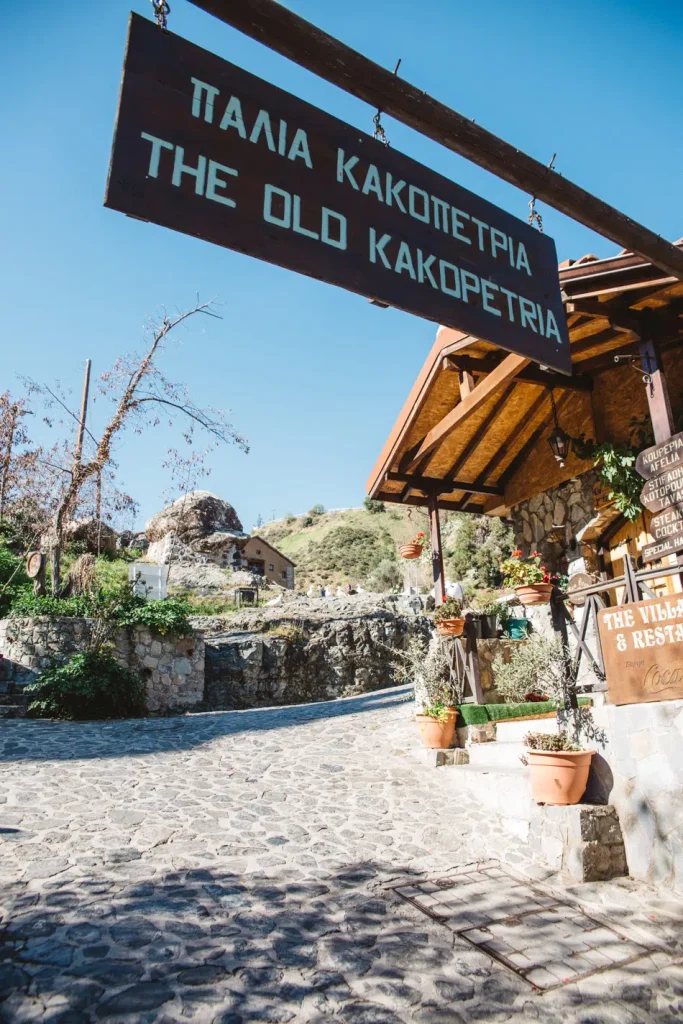
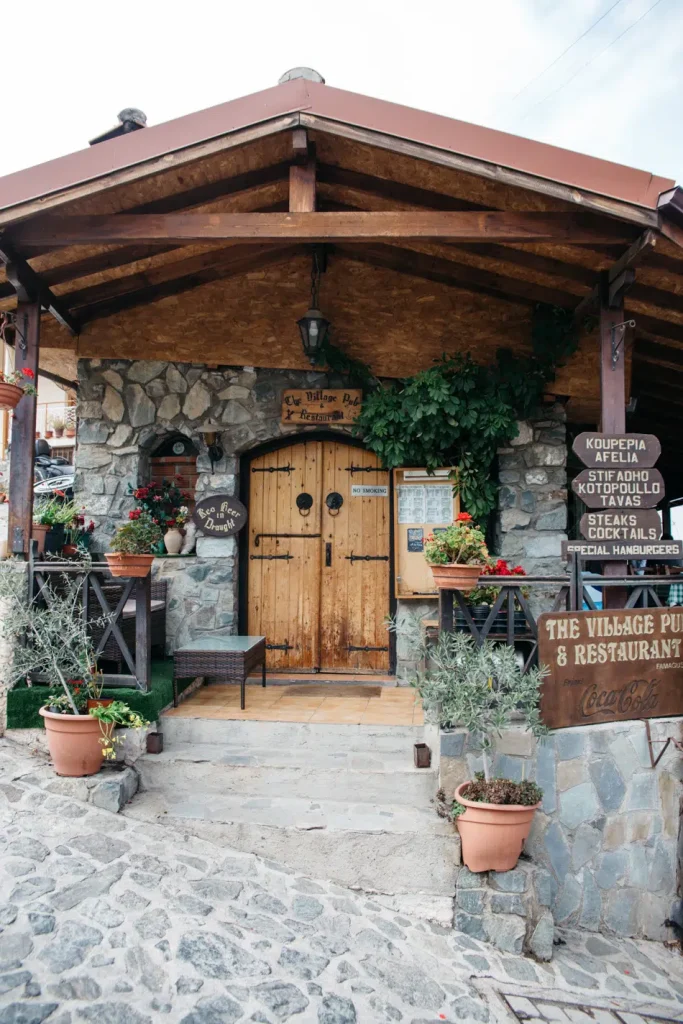
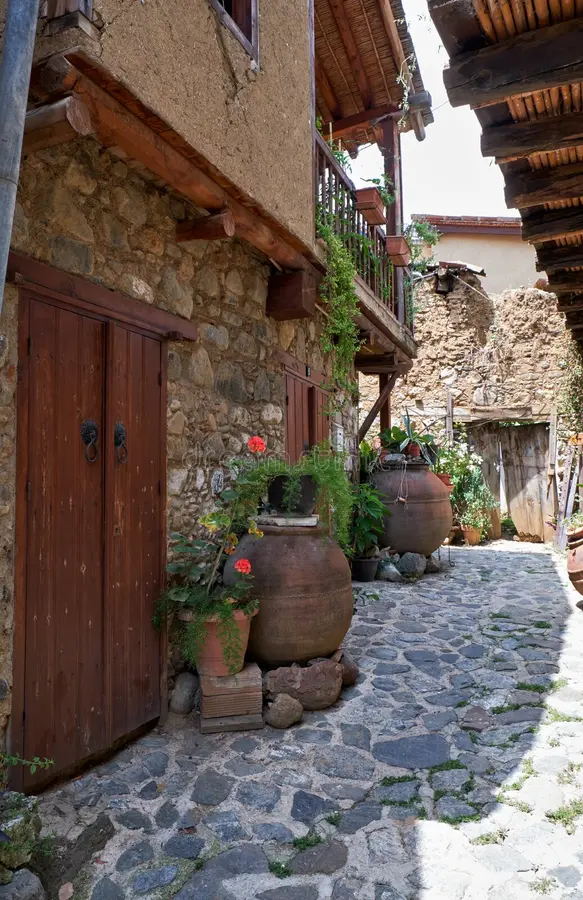
UNESCO Heritage Churches
The Troodos Mountains, where Kakopetria is located, are home to some of the most important Byzantine churches in Cyprus, many of which are inscribed on the UNESCO World Heritage List for their unique architecture and outstanding frescoes. Visiting Kakopetria gives you a perfect chance to explore these religious treasures:
1. Agios Nikolaos tis Stegis (St. Nicholas of the Roof) – Kakopetria
- Located just 2 km from Kakopetria.
- Built in the 11th century as part of a monastery.
- Famous for its well-preserved frescoes, ranging from the 11th to the 17th century.
- The only surviving monastery church in the Troodos region from this period.
- Its name “of the Roof” comes from the wooden roof that protects the church from snow and rain.
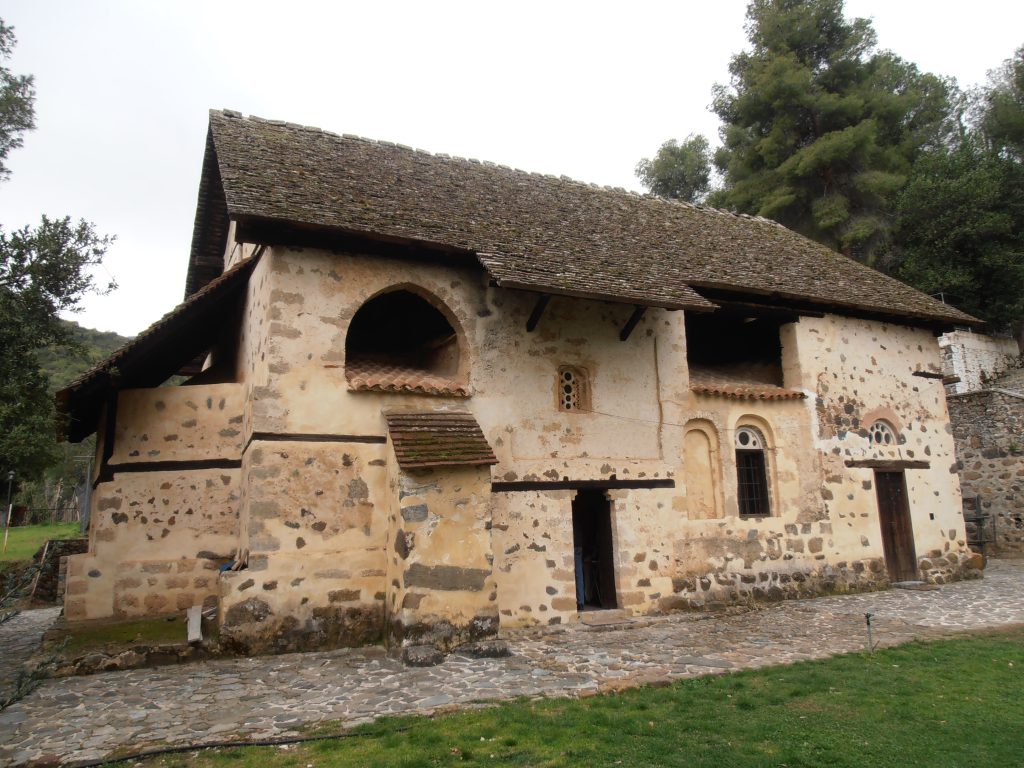

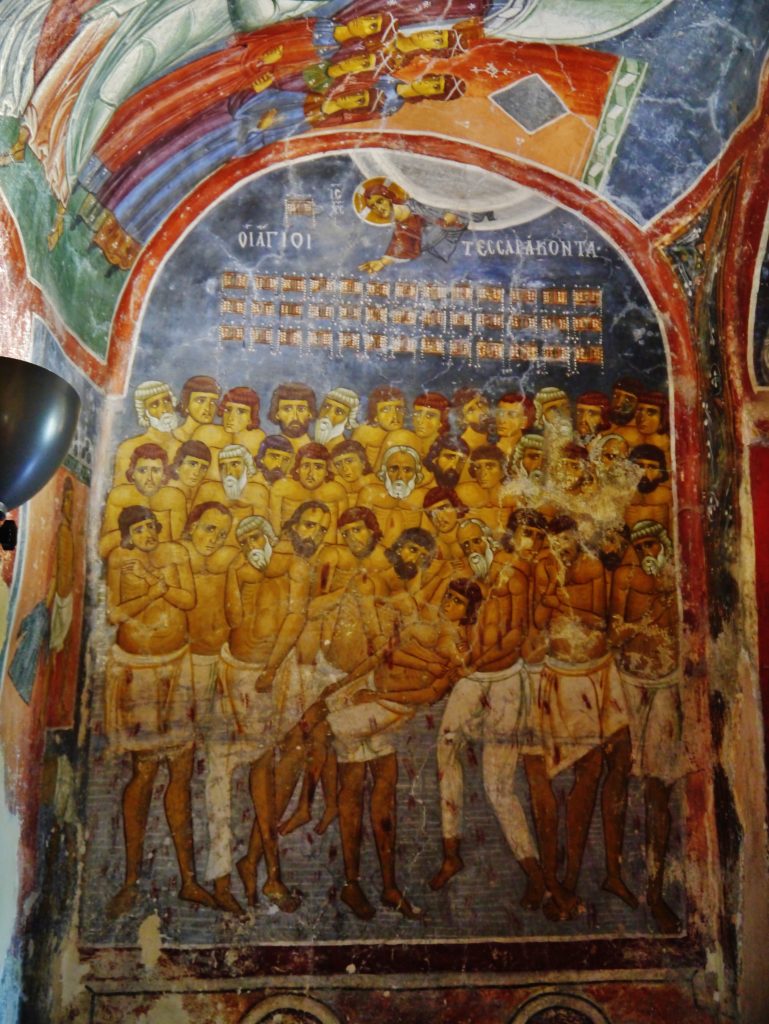

2. Panagia Podithou – Galata (5 km from Kakopetria)
- Built in 1502, dedicated to the Virgin Mary.
- Known for vibrant frescoes representing the Italian Renaissance influence in Byzantine art.
- The church is surrounded by orchards and fields, making it a beautiful countryside stop.
3. Archangelos Michael – Pedoulas (about 20 minutes’ drive)
- A small 15th-century chapel with frescoes showing scenes from the New Testament.
- Famous for its intimate interior and colorful artwork.
- Offers amazing views over the Pedoulas valley.
4. Panagia tou Araka – Lagoudera (about 30 minutes from Kakopetria)
- Built in 1192 by a Byzantine commander.
- Contains some of the finest Komnenian frescoes in Cyprus.
- A real hidden gem for art and history lovers.
Traditional Watermills
Kakopetria is also home to the old watermills, once vital for grinding wheat and producing olive oil. Today, some of them have been restored and turned into small museums, offering a glimpse into traditional Cypriot rural life. The Olive Mill Museum showcases ancient tools and methods used by villagers for olive oil production, while the Watermill of Kakopetria highlights the importance of agriculture and craftsmanship in the area.
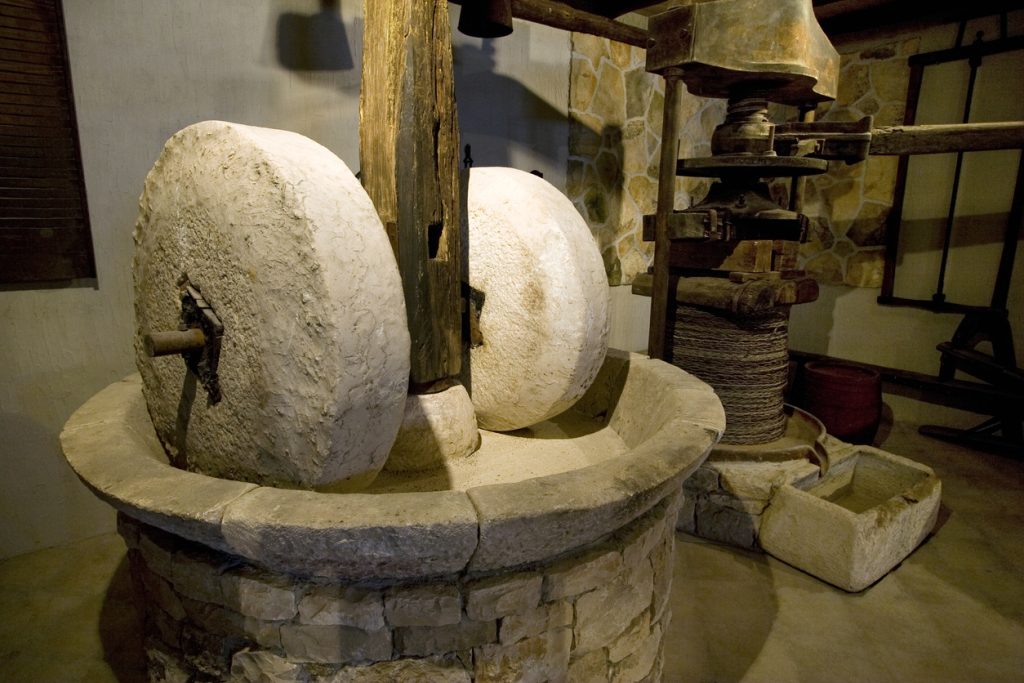
Folklore and Rural Life
Kakopetria is not only rich in history but also in folklore and rural traditions that bring the village to life. Unlike the busy coastal resorts, here you can still feel the heartbeat of authentic Cyprus.
The village has long been associated with folk legends. The most famous is the story behind its name: Kakopetria – “the bad stone.” According to local lore, a giant boulder once rolled down from the mountain and tragically crushed a young couple. The stone still lies in the area and has become a symbol of the village’s folklore.
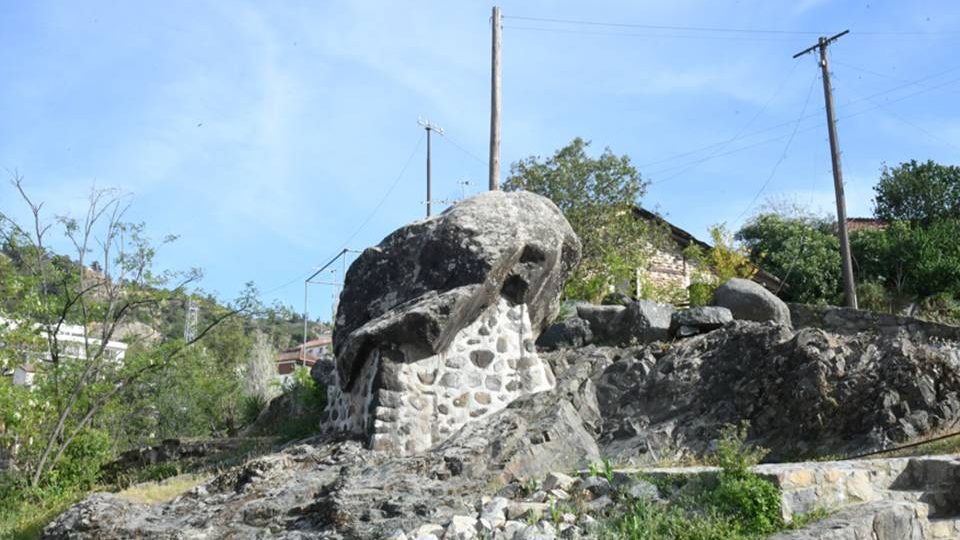
Life in Kakopetria has traditionally revolved around agriculture and craftsmanship. For centuries, villagers cultivated vineyards, olive groves, and orchards, producing wine, olive oil, and fresh fruit. Walking through the narrow alleys, you will still find traditional workshops where locals make handmade sweets, woven fabrics, and copperware.
Folklore is also celebrated in festivals and traditions. During village feasts, you might hear traditional Cypriot music with violin and lute, see locals dance the syrtos, and taste homemade wine or zivania. The warm hospitality of the villagers makes you feel like part of the community, even if you’re only staying for a day.
For travelers who love authentic experiences, Kakopetria offers the rare chance to connect with the soul of rural Cyprus – where history, legend, and everyday life blend into one unforgettable journey.
🎢 Tours & Activities in Kakopetria
From wine tastings to hiking tours in the Troodos Mountains – discover the best experiences around Kakopetria.
Book ToursWhere to Stay in Kakopetria
Kakopetria offers a variety of accommodation options, making it suitable for both romantic getaways and family trips. Unlike the busy coastal resorts, here you’ll find cozy mountain lodges, boutique guesthouses, and traditional stone-built homes that allow you to experience the authentic atmosphere of Cyprus.
1. Traditional Guesthouses
Many old village houses have been renovated into charming guesthouses. They keep their original stone walls, wooden balconies, and fireplaces, but also offer modern amenities like Wi-Fi and air conditioning. Staying in one of these gives you a real taste of Cypriot mountain life.
- Perfect for couples looking for a romantic escape.
- Often located in the Old Kakopetria, close to taverns and walking trails.
2. Boutique Hotels
Boutique hotels in Kakopetria combine comfort with character. They usually have a limited number of rooms, unique interiors, and sometimes wellness facilities such as spa services, saunas, or indoor pools.
- Ideal for travelers who want a mix of tradition and luxury.
- Great option for weekend breaks from Limassol or Nicosia.
3. Mountain Resorts & Modern Hotels
For those who prefer more facilities, there are several mountain resorts and larger hotels near Kakopetria. They often include restaurants, bars, conference halls, and sometimes outdoor pools, making them suitable for families or group stays.
- Comfortable for longer holidays.
- Some hotels offer guided tours, hiking programs, and wine tastings in the Troodos region.
4. Family-Friendly Stays
If you’re traveling with kids, many accommodations in Kakopetria provide family rooms, gardens, and safe outdoor areas. Some guesthouses even include small playgrounds or access to nature trails right from the doorstep.
5. Tips for Booking Accommodation in Kakopetria
- Book early during weekends and holiday seasons, as Kakopetria is a popular getaway for locals.
- In winter, look for hotels with fireplaces or central heating.
- In summer, choose a stay with a balcony or terrace to enjoy the cool mountain evenings.
🏨 Hotels in Kakopetria
Choose from traditional stone-built houses, boutique hotels, or modern mountain resorts in Kakopetria.
Find HotelsBest Time to Visit
- Spring – Lush landscapes and blooming flowers.
- Summer – Cool escape from the coastal heat.
- Autumn – Golden leaves and wine festivals.
- Winter – Perfect for combining with skiing in Troodos.
Practical Tips for Visiting Kakopetria
- Clothing & Footwear 👟
- Wear comfortable walking shoes, as the old village has cobbled streets and some areas can be steep.
- In winter, bring a warm jacket, hat, and gloves, since the temperature in the mountains can be 8–10°C lower than in Limassol.
- In summer, pack light clothes, but also a thin sweater for the evenings – the mountain air gets cooler after sunset.
- Best Way to Travel 🚗
- Renting a car is the most convenient option if you want to combine Kakopetria with other villages like Platres, Omodos, or Pedoulas.
- If you don’t drive, pre-booking a transfer or private tour is recommended, as public transport is limited and takes much longer.
- Dining & Local Food 🍴
- Try traditional meze platters in local taverns – grilled meats, halloumi, loukaniko (sausage), and homemade sweets.
- Many taverns are family-run, so weekends are busier – it’s a good idea to book a table in advance.
- Don’t miss the local commandaria wine and Cypriot honey, which you can buy in village shops.
- Shopping & Souvenirs 🎁
- Look out for shops selling handmade lace, pottery, and wooden crafts.
- Local products like olive oil, sweets, and herbs make perfect gifts to take home.
- Accommodation 🏨
- If you plan to stay overnight, book your accommodation early, especially on weekends and during public holidays.
- Choose a traditional stone guesthouse for an authentic mountain experience.
- Activities & Hiking 🥾
- Kakopetria is a starting point for several Troodos hiking trails – bring a small backpack with water and snacks.
- In summer, hikes are best done early in the morning to avoid the midday heat.
- In winter, check the weather forecast, as some trails may be muddy or icy.
- Family Travel 👨👩👧
- The riverside trail is flat and safe for children.
- Some guesthouses are family-friendly, offering larger rooms or apartments with kitchens.
- Cash & Payments 💳
- Most taverns and hotels accept credit cards, but it’s handy to carry some cash for small shops, bakeries, or kiosks.
- Parking & Driving 🅿
- There are free and paid parking spots near the old village.
- Streets in the center are narrow, so it’s best to park on the outskirts and explore on foot.
